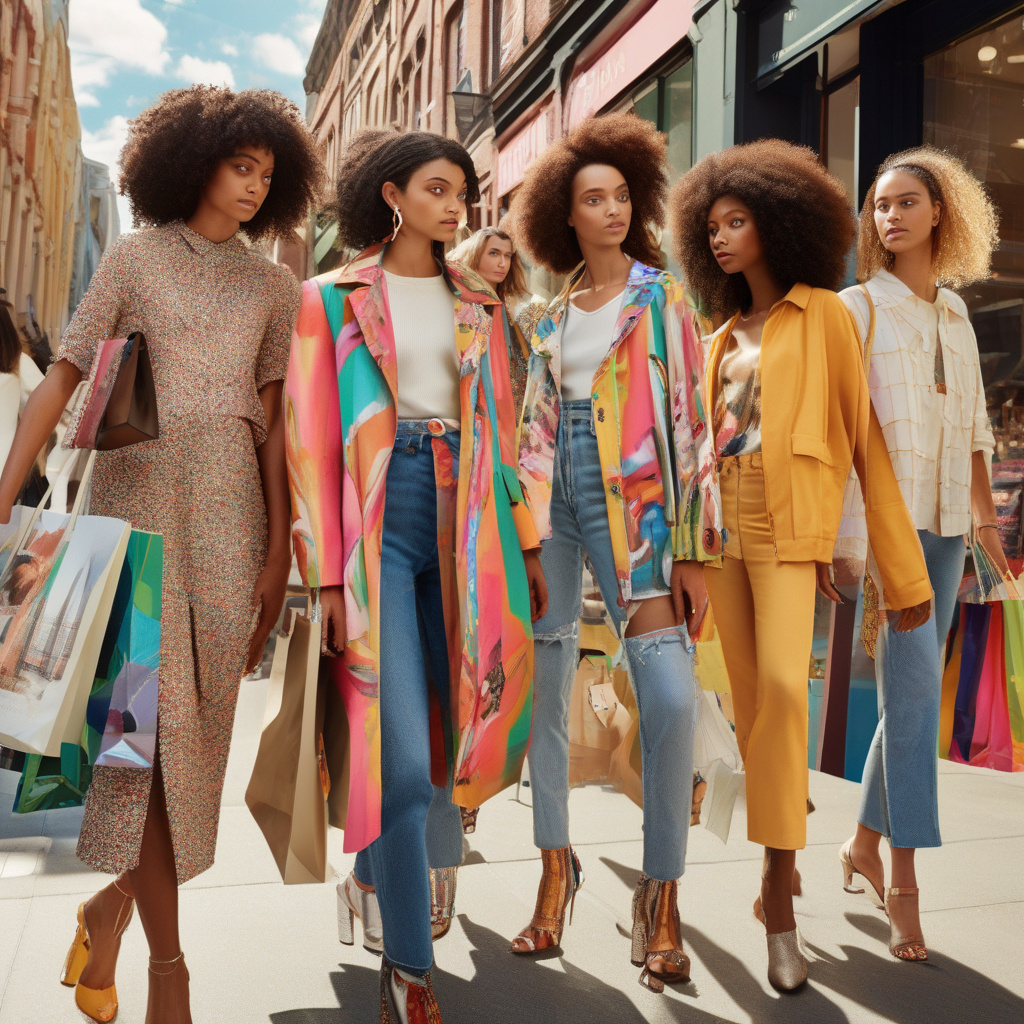The Shein Effect: Is Fashion Stuck in a Race to the Bottom?
In recent years, the fashion industry has witnessed a seismic shift, largely attributed to the rapid rise of online fast-fashion giant Shein. This China-based brand, known for its rock-bottom prices and an ever-expanding inventory, has disrupted traditional retail models and raised pressing questions about sustainability and ethical practices in fashion. As competitors scramble to replicate Shein’s success, the industry finds itself at a crossroads: Are fashion retailers chasing Shein’s unsustainable pricing model, or can they strike a balance between affordability and responsibility?
The Shein phenomenon is emblematic of a larger trend in retail: the prioritization of speed and price over quality and sustainability. With thousands of new styles added weekly, Shein has perfected the art of churning out cheap clothing, appealing to a demographic that values instant gratification. The average consumer can purchase a trendy outfit for less than the cost of a cup of coffee. This pricing strategy has set off a race among other retailers to lower their prices in a bid to remain competitive.
However, this race to the bottom raises significant concerns. The environmental impact of fast fashion is staggering. According to a 2022 report from the United Nations Environment Programme, the fashion industry accounts for 10% of global carbon emissions and is among the top polluters of clean water. Additionally, the ever-increasing production cycles lead to excessive waste, with millions of tons of textiles ending up in landfills each year. As retailers attempt to replicate Shein’s model, they inadvertently contribute to this environmental crisis.
Despite the allure of Shein’s pricing, some companies are beginning to recognize the importance of sustainability. Brands like Everlane and Reformation have emerged as alternatives, highlighting transparency and ethical practices in their production processes. Everlane, for instance, is committed to radical transparency, sharing the true cost of their products with consumers, while Reformation focuses on sustainable materials and production methods. These brands illustrate that it is possible to offer affordable fashion without compromising on ethics or environmental responsibility.
Yet, the challenge remains: how can mainstream retailers adapt to the changing landscape without succumbing to Shein’s unsustainable practices? Many are exploring the concept of a “middle ground,” where affordability and responsibility coexist. For example, H&M has launched its Conscious Collection, which incorporates sustainable materials and practices while still maintaining competitive prices. This approach aims to attract environmentally conscious consumers without alienating those seeking budget-friendly options.
Retailers are also investing in technology to improve their supply chains and reduce waste. Artificial intelligence and data analytics enable brands to better predict trends and consumer demand, leading to more efficient production cycles. By optimizing inventory levels and minimizing overproduction, retailers can cut costs while also reducing their environmental impact.
Another avenue for achieving balance is through the promotion of circular fashion. Brands like Patagonia and The North Face have pioneered the concept of take-back programs, encouraging consumers to return their used clothing for recycling or resale. This not only extends the life cycle of garments but also fosters a culture of sustainability among consumers. By shifting the focus from fast consumption to responsible ownership, retailers can help change consumer behavior and reduce the pressure to continuously produce new styles.
The conversation around the Shein effect also highlights the role of consumers in shaping the future of fashion. As awareness of sustainability issues grows, shoppers are increasingly demanding accountability from brands. A 2023 survey by McKinsey found that 67% of consumers consider sustainability an important factor in their purchasing decisions. This shift in consumer mindset could incentivize retailers to adopt more responsible practices in order to maintain their market share.
Ultimately, the fashion industry stands at a critical juncture. Retailers must navigate the complexities of consumer demand for affordability while addressing the urgent need for sustainable practices. While it may be tempting to chase Shein’s pricing model, the long-term implications of such a strategy could be detrimental to both the planet and the industry as a whole. By prioritizing ethical production, transparency, and innovative solutions, fashion retailers can escape the race to the bottom and foster a more responsible future.
In conclusion, the Shein effect serves as a cautionary tale for the fashion industry. As brands grapple with the challenge of balancing affordability and responsibility, the opportunity exists to redefine what it means to be fashionable in today’s world. The path forward may not be easy, but with concerted effort and a commitment to change, retailers can break free from the unsustainable cycle and pave the way for a more sustainable and ethical fashion landscape.
#SheinEffect, #FastFashion, #Sustainability, #RetailTrends, #EthicalFashion
